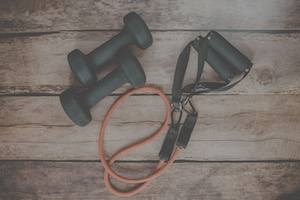Blade baits are the way to go
This winter’s uncharacteristically warm weather has provided a host of open water fishing opportunities, as area lakes and rivers are all pretty much ice-free.
Walleyes, bass, northern pike and muskies are catchable, and vibrating blade baits are one of the best ways to do so.
To those unfamiliar, blade baits are compact metal lures made up of a lead-weighted piece of stamped steel, typically minnow-shaped. Common weights run from ¼ to ¾ ounce, with ½ ounce being popular in many Pennsylvania fishing situations.
A series of holes (usually three) for line attachment is found on the back of the lure, where the dorsal fin would be. The middle hole allows the bait to hang perpendicular, and is best for fishing the bait vertically.
In my experience, blade baits excel in situations where fish are lethargic, yet still catchable. In frigid water, most gamefish (warmwater species in particular) are not likely to move for a meal. But if you put something right in their face, repetitively, something demanding no effort to eat, they might just do so.
For instance, during a recent trip on the Allegheny, my friend Deron Eck and I caught around 20 walleyes on blade baits during the last hour of daylight.
Blade baits, in this situation, are fished with a pumping motion where you give the bait a sharp, upward jerk of about one to two feet. The blade vibrates during this rapid ascent.
The rod will be at about a 10 to 11 o’clock position at the apex to the upward sweep. After a second or two for the bait so settle in, lower it, keeping just a bit of tension on the line. Too much freedom (i.e. slack) and you won’t feel a strike, and it’s more likely a hook will foul on the line.
I like to have the lure hang motionless for a few seconds before the next “pump.” Most hits will happen when the lure is falling, or during the hang. Hits can be very subtle, so expect a good percentage of fish to “just be there” when you make a pump.
About every five or six pumps, I like to allow the lure to fall completely to the bottom. This way, I know I’m in the correct zone, which is within a foot or so of the bottom.
If the air temperature is above freezing, I prefer braided line (braid absorbs water and turns to rope if it’s much below 32 degrees). The no-stretch attributes of braid excel in this situation.
If it’s too cold, fluorocarbon is a good alternative. Blade baits are line twisters. To combat this, I tie in a barrel swivel and then a short piece of nylon mono or fluorocarbon line as a leader, about a foot or so.
The leader is finished off with a snap. Don’t tie directly to the lure. The sharp edges of the lure will quickly wear through the line.
A relatively short 6 to 6 ½ foot medium power, fast action spinning rod performs well when working a blade bait, one coupled with a smaller spinning reel. Pumping blades can get physically taxing, so it’s wise to keep the outfit light.
The short rod length provides the right arc for working the bait. One with backbone ensures the action of the pump transfers down to the lure, and is not just absorbed by the give of the rod.
Color-wise, blades come in a variety of finishes, though metallic chrome and gold are most common and certainly effective.
Jeff Knapp is an outdoors columnist for the Butler Eagle













